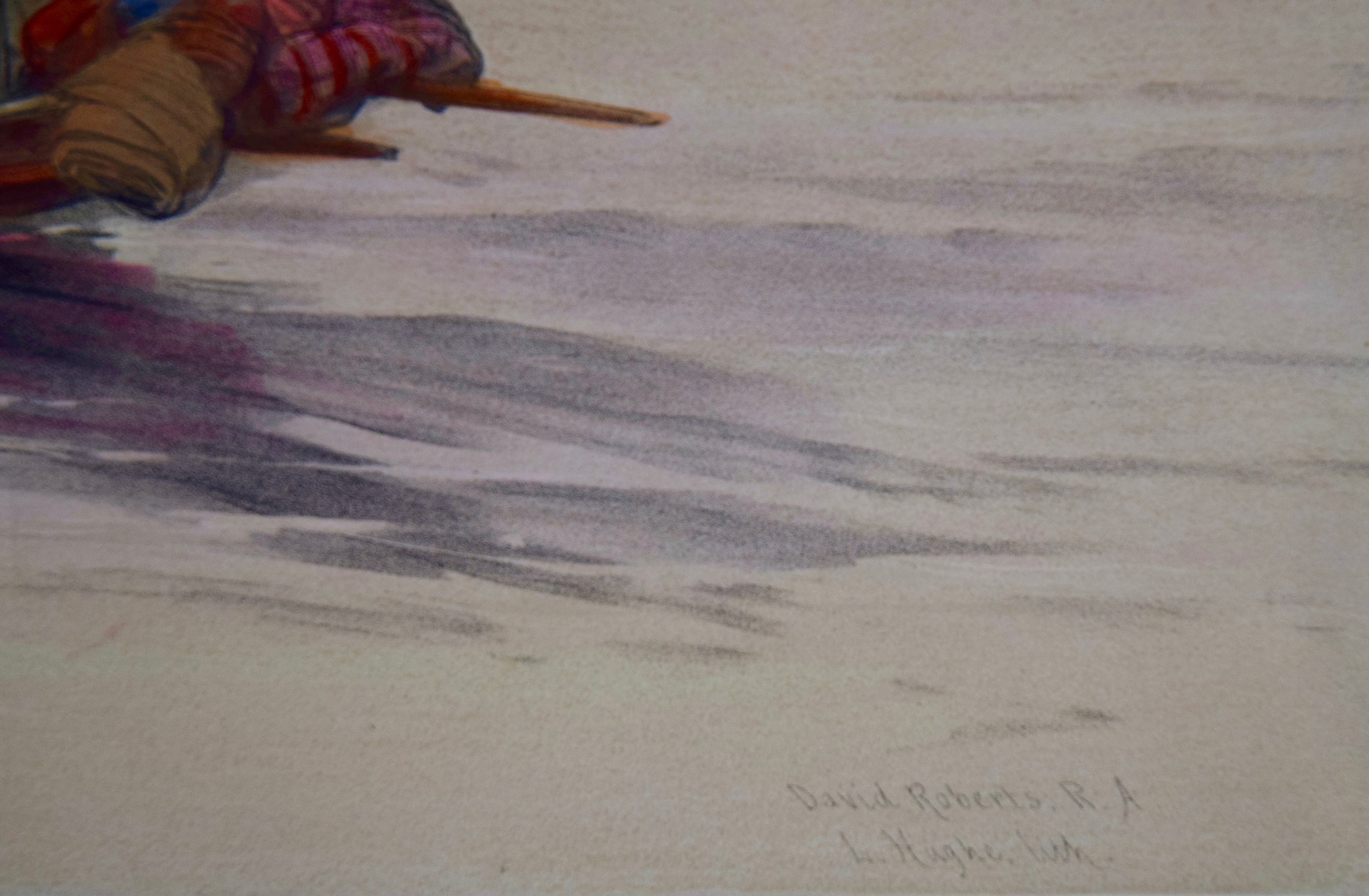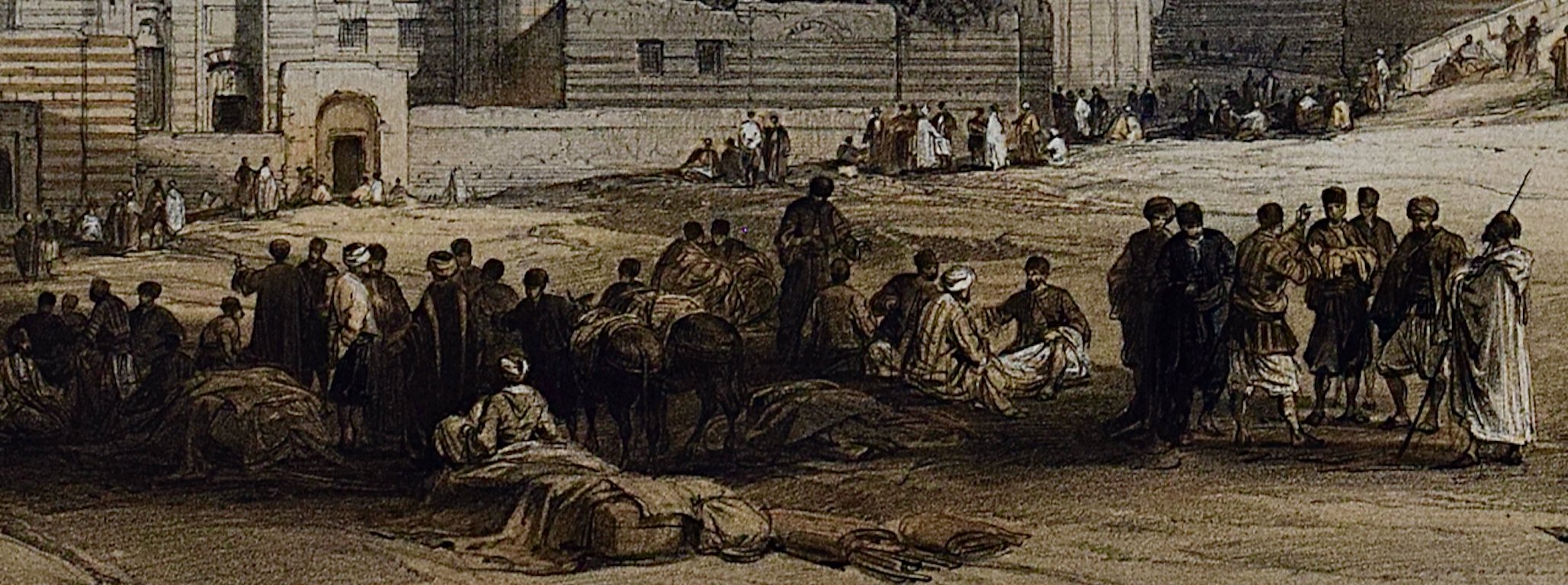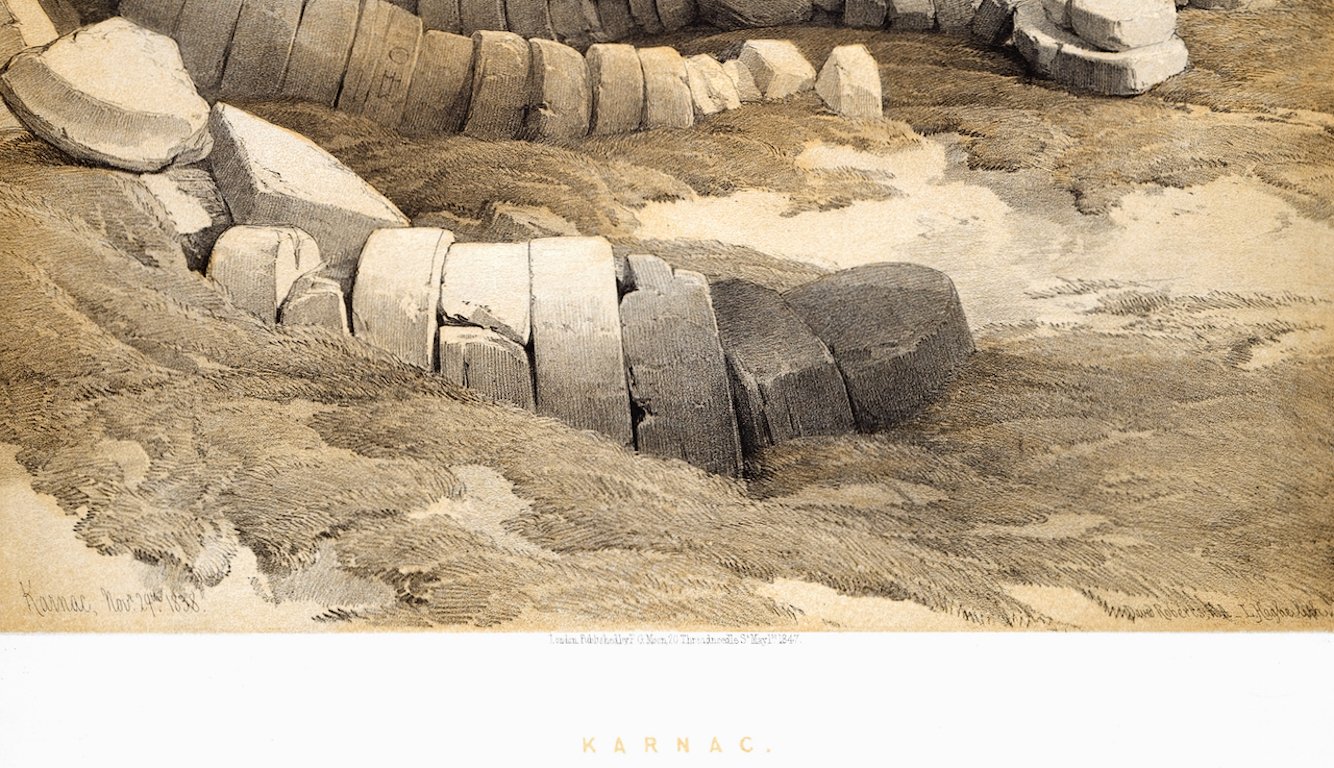Roberts toured Baalbec on May 7, 1838 (the date shown in the plate in the lower left). He described it as "perhaps, the most elaborate work, as well as the most exquisite in its detail, of anything of its kind in the world. Even independently of the beauty of the sculpture, and its excellent preservation, we are lost in wonder at the size of the stones, and at the nature of the machinery by which such masses were raised."
The print depicts the imposing entrance to the Temple of Bacchus with its mammoth cornerstone perched precariously above the steps below. Egyptian men are seen conversing around the entrance and a group are depicted in the distance in the center of the temple.
The print is presented in an antiqued gold-colored wood frame with a dark grey mat with a lower cutout revealing the title. There are very faint spots in the upper portions and the left margin. The print is otherwise in excellent condition.
The Temple depicted is dedicated to Bacchus the Roman god of agriculture, wine and fertility, who was the son of the god Jupiter in Roman mythology. It is part of the large Baalbec (Baalbek) temple complex (which also includes a temple dedicated to Jupiter) that is located in the Al-bibiq in Lebanon's Bekaa Valley. The whole complex was declared a UNESCO World Heritage site in 1984 with the Temple of Bacchus being one of the best preserved Roman temple ruins. It was probably commissioned by Roman Emperor Antoninus Pius (A.D. 138-161), dating to around the second century A.D.
The drawings and watercolours from this tour of the Holy Land and Egypt were collated together into folios and released over a seven year period by the publisher F.G. Moon from 20 Threadneedle Street London. This lithograph is from the Royal Subscription Edition (1842-1849) with only 500 copies produced per depiction. Louis Haghe (the Belgian engraver and friend of Roberts) worked on all of the lithographs for this series.
David Roberts (1796-1864) was a Scottish painter who specialized in landscapes, architectural subjects, and scenes from the Middle East and Europe. Born in Edinburgh, Roberts began his career at age ten as an apprentice to a house painter and eventually became a scene painter for theater companies in Edinburgh and London. In the 1820s, J. M. W. Turner recognized his artistic talent and encouraged him to become a full-time artist. He began to focus on painting landscapes and architecture. In 1838 he traveled to Egypt and soon after to the Holy Land, concluding in Jerusalem. Roberts' travels in the Middle East had a profound impact on his art, and he produced a series of highly detailed and realistic paintings and sketches of the region's famous ruins and other landmarks, including the Pyramids of Giza, the Sphinx, the Temple of Abu Simbel and Cairo. Upon his return to England, F. G. Moon agreed to publish duotone lithographs and often hand- colored lithographs created by Louis Haghe from Robert’s sketches and watercolors. The resultant lithographs from Roberts' tour of the Holy Land and Egypt were collated together into folios and released over a seven year period by the publisher Moon. These publications were highly acclaimed and very popular for their esthetic quality, historical and topographical accuracy, and Robert’s dramatic depiction of his scenes. Queen Victoria and Charles Dickens were among the subscribers who collected his works. These works helped to popularize and enhance the fascination with the mysterious Orient and Middle East that was prevalent in Europe at the time. Roberts works led to his election to the prestigious Royal Academy in London. Roberts' lithographs remain extremely sought-after today and can be found in major museums and collections around the world. They have been steadily appreciating in value.







































